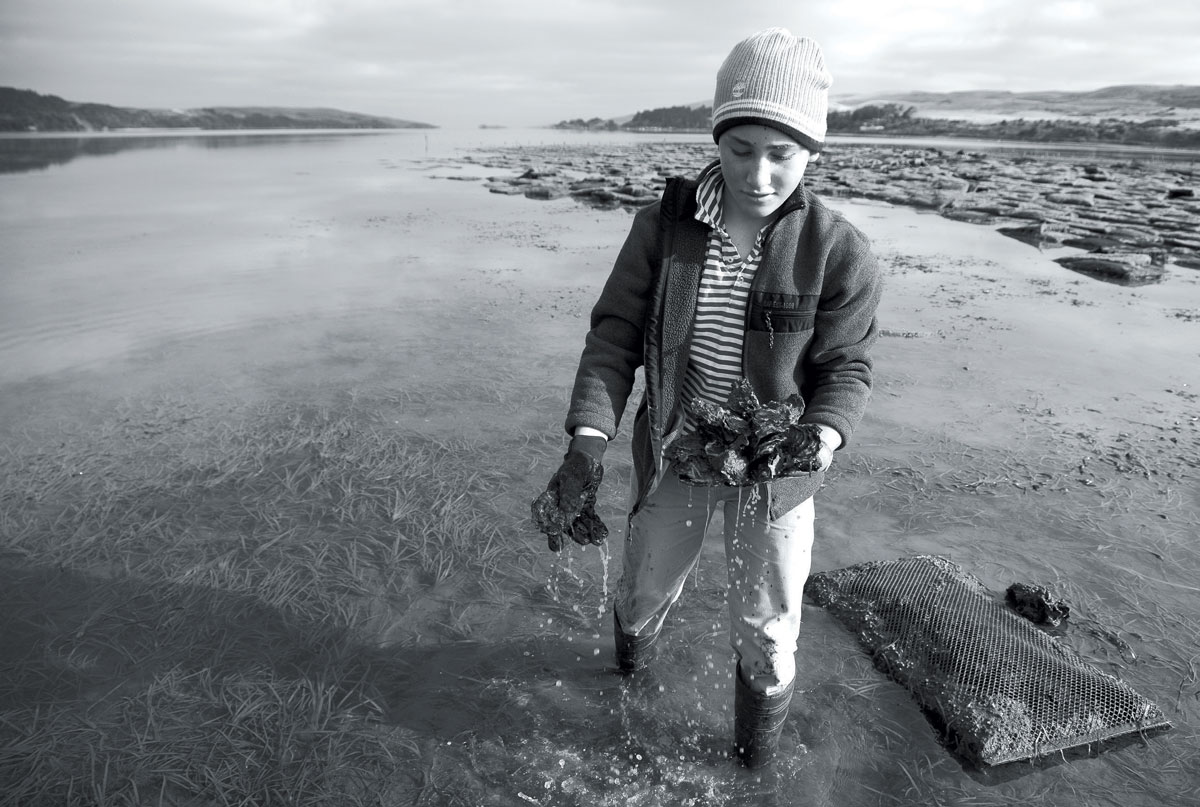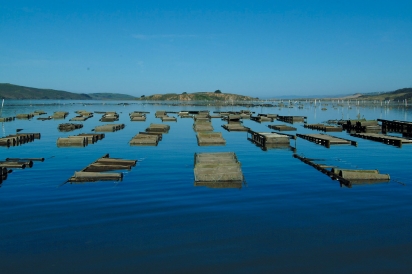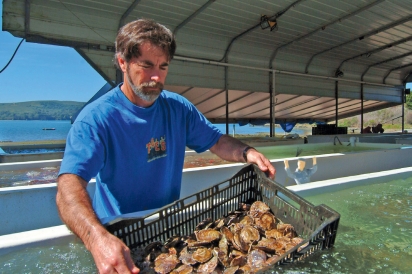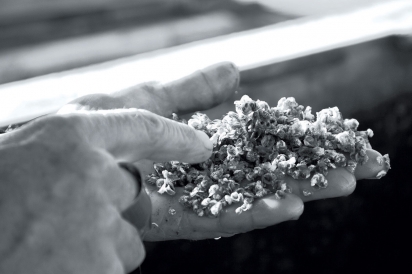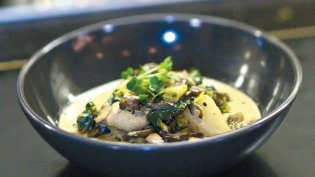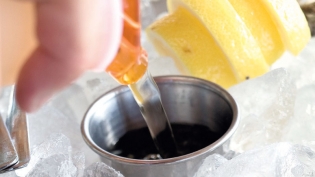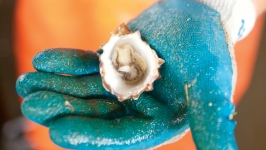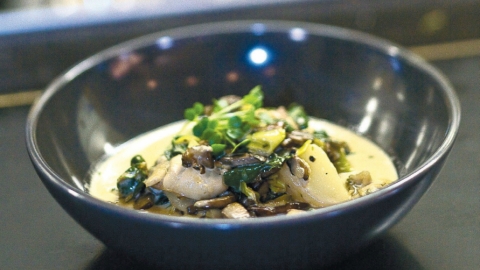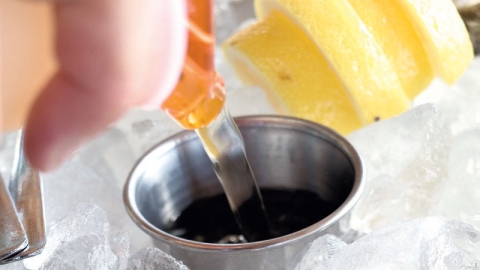Redemption on the Half-Shell: An Anthem for Farmed Oysters
“Eating farmed oysters is our patriotic duty. They are not just sustainable, they actually help to restore depleted ecosystems.”
—Barton Seaver, For Cod and Country (Sterling Epicure, 2011)
“You are eating the sea … and are on the verge of remembering you don’t know what, mermaids or the sudden smell of kelp on the ebb tide or a poem you read once, something connected with the flavor of life itself.”
—Eleanor Clark, The Oysters of Locmariaquer (Pantheon Books, 1964)
“We find our place in the world through food. What has happened to our environment and seafood is the tragedy of the commons. The root purpose of conservation is to protect and restore. We’re so stuck in the sustainable dialogue that we’ve left out room for progress. We must restore our ecosystems and fisheries through activities like shellfish aquaculture. The concept of sustainable relies on fear and guilt to maintain the status quo, there’s no reward or sex appeal in that.”
Barton Seaver’s observations are refreshingly frank and resonate with my own concerns about the need for a shift in how we view food and environmentalism. At the gracious invitation of Hog Island Oyster Company, I am spending an afternoon in conversation with this young seafood evangelist, National Geographic Fellow, Esquire Chef of the Year and author of For Cod and Country (Sterling Epicure, 2011).
Sharing a large platter of oysters between us serves to contribute more energy and ardor to the discussion. When Barton announces that “Delicious is the new environmentalism and we can save seafood by eating seafood,” I am only too happy to roll up my sleeves and do my part.
Barton believes that farmed oysters are one of the most perfect foods we can eat and that we should actually over-consume them to encourage an increase in the amount of farming. “As they filter feed on plankton they’re cleaning the water of nitrogen, sediment and other particles that negatively impact water quality. Our oyster farmers are providing us a high-protein food with a small carbon footprint and a large environmental benefit.” Barton further asserts that “Eating a farmed oyster is an act of patriotism.” This leads to a lively discussion about a campaign that would feature Barton dressed as Uncle Sam with the slogan “You should all pledge allegiance to the farmed oyster and the restoration for which it stands. I want YOU to promise to support your local oyster farmers!”
As Barton and I “over-consume” oysters, we discuss my concerns about the ability to build positive relationships between the environmental movement and the movement that seeks to promote thriving local and regional foodsheds where people grow and consume food responsibly. This might seem like a natural and easy relationship, but oyster farming has become a point of contention within my own foodshed of Marin County, most notably exemplified by an ongoing conflict between Drakes Bay Oyster Company and the Point Reyes National Seashore authority.
In response, Barton refers me to words of wisdom from Carl Safina’s book The View From Lazy Point (Henry Holt and Company, 2010), in which Safina writes that “Just as we went from hunter-gatherers to agriculturalists to civilized societies, now we must take the next great leap: from merely civilized to humanized.”
As I lift yet another cloud of briny delight from its shell and take a sip of perfectly paired wine, I’m emboldened to share that I feel a critical part of becoming humanized is stepping into our role as part of the fauna of this planet, to find our place in nature rather than either building walls or fences to separate us from her in order to “protect” her or exploiting her as we “take and pillage” from the top of the food chain.
We talk about our early childhood connections to nature, particularly in the estuaries we explored—Barton on the East Coast and me on the Gulf Coast—blue crabs and oysters beloved treats for each. It seems symbolic that an estuary is a meeting place between river and ocean, where salt water and fresh water mix—a transition zone between land and sea. In these zones oysters have thrived for over 200 million years. Their hermaphroditic nature allows them to alternate between being father and mother, making oysters one of the most prolific of all life forms. If any creature in nature knows how to stay in relationship to our beautiful planet, it is the oyster.
Perhaps they are our bridge from merely civilized to humanized. Safina says in the prelude of his book that “I’m also struck that we … haven’t quite realized that nature, civilization, peace and human dignity are all facets of the same gemstone, and that abrasion of one tarnishes the whole.” I think of what an oyster does with an internal abrasion: It makes a pearl. Yes, Barton, I will pledge allegiance to the farmed oyster.
Barton’s passion for the oyster can be scientifically expressed in its high value as a “keystone species.” Think of the keystone in the center of an arch: This singular stone bears the weight of the other stones; its removal would cause the arch to collapse. Likewise, a keystone species plays a critical role in maintaining the structure of an ecological community. Scientifically it’s a fairly new concept, put forth in 1969 by University of Washington professor Robert Paine. His study on a carnivorous starfish on Washington’s Pacific coast showed that with the removal of that single predator, mussels took over the ecosystem in that area and caused a huge reduction in the diversity of the system. The term has been extended to include species that stabilize ecosystems through means other than predation, such as providing habitat or enhancing food supply, like the oyster.
P. J. Sanjeeva Raj is a consulting ecologist and ecosystems restoration specialist. In his article “Oysters in a New Classification of Keystone Species” (Resonance Journal of Science Education, 2008), he argues that we should differentiate between predator keystone species and positive keystone species, like oysters, which attract and promote species diversity directly in an ecosystem. According to Raj, “All the basic needs for shelter and food are supplied uniquely by the live oysters to their associates, which the classical predator type or other types of keystone species do not provide. Hence, oysters may be ranked as the most efficient ‘keystone niches.’” Raj uses the term ‘keystone niche’ to indicate a keystone species that provides a place and sustenance for other species.
I am blessed to live in an area where oysters are already being extensively farmed. According to Luc Chamberland, the founder and farm manager of Tomales Bay’s first community oyster farm, Pickleweed Point, there are only about four areas in California that are perfectly suited for growing oysters safe for human consumption: Drakes Bay, Tomales Bay, Humboldt Bay and Morro Bay. Luc believes that we would be missing a huge opportunity if we didn’t have oyster farms in these ecosystems and that oysters should be grown in perpetuity in every bay where they can grow.
Luc also works for Dixon Marine Services, an oceanographic and wetlands restoration firm. Luc started Pickleweed Point as a grassroots organization that would allow and encourage local community members to be involved in the farming of oysters. He believes that with training, education and outreach the community will more deeply understand the importance of water quality and learn the positive role that oyster farming can play in it.
A secondary mission is teaching young people in the area that oysters are a valuable sustainable food source. He feels that the programs of Pickleweed Point contribute to the education of the community about the appropriate use of natural resources so that they will be better equipped to make decisions when conflicts occur with respect to them. The Tomales Bay Oyster Company in Marshall has allocated a small portion of its leased land to the farm. Thus far, Pickleweed Point has hosted over 250 students at the farm, in addition to training its “community farmers,” and is offering CSA memberships to interested folks who don’t live close enough to actually come and work at the farm.
In addition to the farming of oysters in this area, Luc fills me in on the work of a group called The Watershed Project. Together with scientists from San Francisco Bay Native Oyster Working Group, they are rebuilding the native Olympia oyster reefs in San Francisco Bay. Olympias were nearly destroyed by over-harvesting in the mid-1800s as well as by degraded water quality. While they are too small and slow growing to be economically viable for oyster farming today (the majority of farmed oysters in our area are the Pacific variety, which can’t breed here and the seed oysters come from hatcheries), helping Olympias to recover is an important ecosystem restoration that works hand in hand with the farming of non-native oysters.
In 2009, the Ocean Studies Board of the National Academy of Sciences compiled a study of Drakes Bay. The study concluded that while the Pacific oyster now being farmed in Drakes Bay “is not a direct replacement of the native populations of the Olympia oyster, it may be viewed as providing similar biogeochemical functions and ecological resilience.”
Luc explains that “Our area’s farmed oysters and the native Olympias, depending on the species and size, can filter up to 50 gallons of water a day per oyster. Minimizing the cloudiness of the water and allowing more sunlight through it increases the growth of eelgrass beds and other nutrients important to fish, birds and other wildlife. Eelgrass beds serve as nurseries for many species including salmon, which need feeding time in the eelgrass before they go out to sea. One reason for recent lower returning salmon populations in our area could be this food chain breech—it’s now believed the salmon often go out to sea too weak and lean to survive.
Terry Sawyer and John Finger are co-owners of Hog Island Oyster Company, founded in 1983 on Tomales Bay. Terry spoke with me about recently receiving the first Food Alliance Sustainable Shellfish certification for their oysters and clams. This certification sets benchmark practices for fish and wildlife conservation, environmental protection and safe and fair working conditions for shellfish farms. “It was a rigorous process, with lots of testing and evaluating of our practices, and not just in how we raised our oysters, but in being required to define our value to our community and our surrounding landscape,” he says. “This fit in with our commitment to have a quality product, be a great place to work and be an asset to our neighbors and ecosystem.”
Karen Lewotsky is the certification director for the Food Alliance. She said the Pacific Coast Shellfish Growers’ Association initially came to Food Alliance with a voluntary checklist for members, inquiring about a third-party independent certification. She worked with Andy Suhrbier, senior biologist at the Pacific Shellfish Institute, to develop the criteria, which were reviewed by a panel of nine industry and environmental experts, including a representative of the World Wildlife Fund.
This particular certification includes standards regarding shared resource management because aquaculture requires collaborating with upland owners and other stakeholders as diverse as a kayak shop up the road or a nearby restaurant. By coordinating efforts and sharing resources the whole community improves its ecosystem and foodshed. T his is particularly true in our area. For four years I was blessed to live on the shores of Tomales Bay in Marshall within walking distance of Hog Island Oyster Company, Tomales Bay Oyster Company and literally next door to the Marshall Store, which is home to some of the best barbecued and smoked oysters on the planet. Just a serpentine and dreamy drive away brought me to the salty sweet air of Drakes Bay, where I bought the first oysters I ever ate in California at what is now Drakes Bay Oyster Company. While living there, I recall that one evening, while standing at the grill looking out across Tomales Bay, grassy hills at our back, my husband noted with gustatory bliss, “We live between the oysters and the cows.”
In the spirit of Barton Seaver’s proclamation that “Delicious is the new environmentalism!” we have included recipes for two of my favorite ways to enjoy oysters. I never dreamed that as a Gulf Coaster I would eat an oyster with anything other than a drop of Tabasco and a squeeze of lemon juice, but Hog Island’s Hog Wash mignonette has a bright, fresh taste that highlights the luxurious texture and sweet saltiness of our local oysters.
On a more “cooked” note, I’ve been eating versions of oyster stew for many decades and hope that my family in New Orleans and Mobile will forgive me, but Chef Wayne Pratt of the Station House Cafe in Point Reyes Station makes an oyster stew that is pure perfection. I can barely speak of it because the taste of it, the feel of it in my mouth, the weaving together of land and sea with the salty oysters and the sweet locally produced cream and butter have bypassed my higher brain functions and its forever imprinted in the find it, eat it, right now area of my ancient reptilian brain. Go forth and find redemption on the half-shell!
Luc Chamberland of Pickleweed Point can be reached at luc@thewatershedproject.org.


